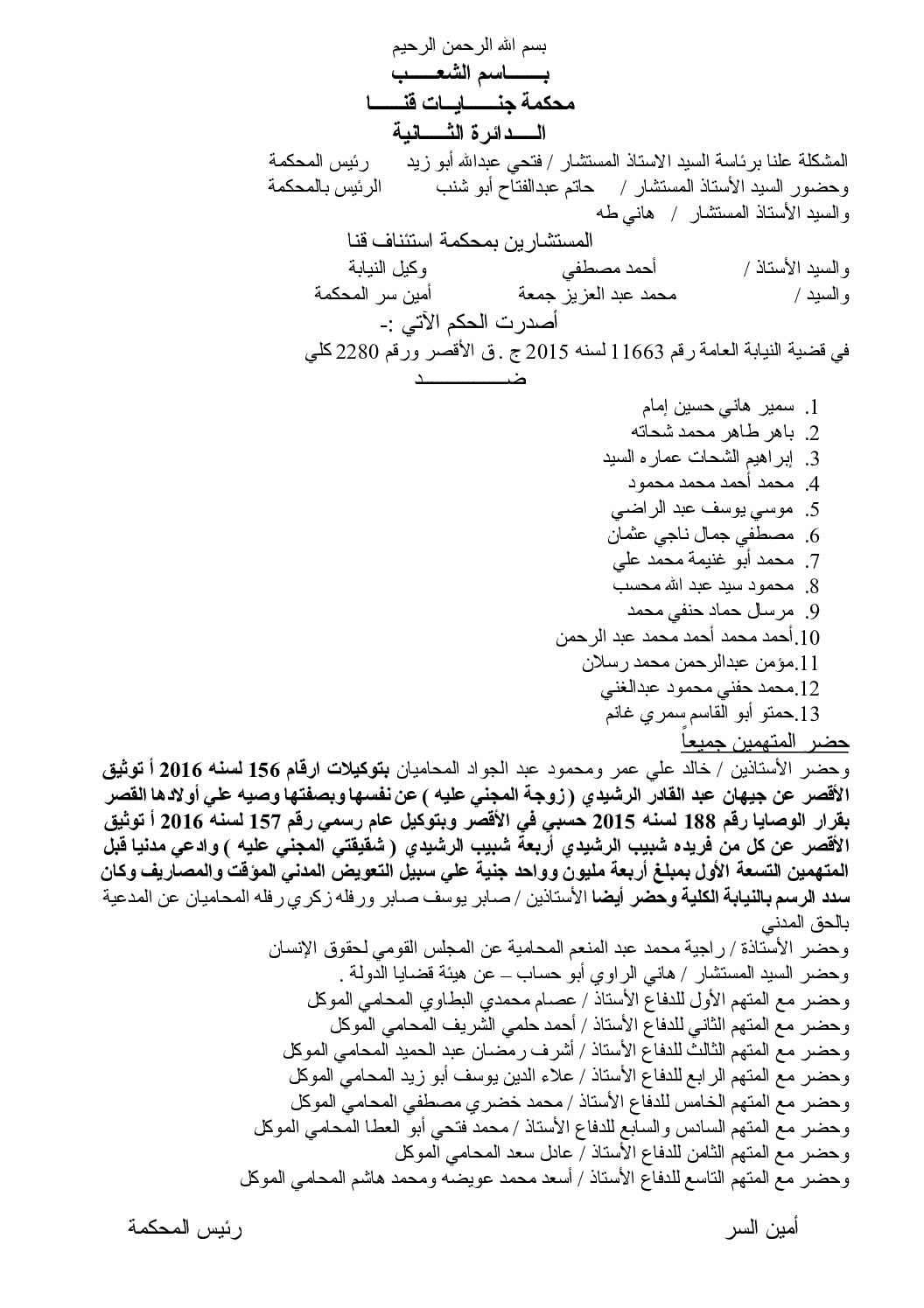ECESR Publishes Major Report on 2013 Protests in Egypt

On 7 July 2014, the Egyptian Center for Economic and Social Rights (ECESR) published a major report documenting protests in Egypt in 2013, which provides a record of social and economic protests monitored by the Center.
5212
Protests During 2013
The report is in three sections, describing the following. The first section provides a general overview of the temporal and spatial frequency of protests and a comparison of three major categories: workers, economic, and social. The next two sections examine the details of workers actions and social and economic protests, respectively. This is in addition to two annexes. The first elaborates on the methodology used to build the database and clarifies the various phases of data identification, collection, and classification. The second annex is comprised of selected tables from the dataset on economic and social protests in Egypt in 2013.
The various sections of the report present the data on workers, social, and economic protests without interference or generalizations, allowing the protesters to speak for themselves through their actions. This illustrates a general picture of the situation, which might not be complete or crystal clear, but is ultimately truer than any description through preconceived notions.
“Despite the various indicators pointing to the importance of economic and social protests in illustrating the details of the Egyptian landscape in the past few years, interest in such expressions has not yet broken out of its traditional framework, which tends to jump to prior generalizations about the general causes and implications of such protests. Such generalizations are often based on changing political biases or permanent ideological tendencies. On one hand, the characterization of those protests by commentators varies in relation with the current ruling regime, from being a result of the incitement by anti-regime segments to being a clear manifestation of its failure. On the other hand, other commentators attempt to impose ready ideological templates on such protests, coming up with arbitrary results for the most part.” (From the report’s introduction)
In the past, protest monitoring specifically lacked a clear scientific approach to understand and explain economic and social protests. This is expected, however, if we take into consideration that such an approach can only be based on a solid foundation of data, entailing the most comprehensive level of coverage of the biggest number of protests. It should also possess a depth, through the collection of as much details as possible on each protest, and be analyzable, by providing a classification for the various details and linking them in a manner facilitating their interpretation on more than one level and using various approaches. The lack of such a foundation until today made it impossible to scientifically approach economic and social protests in Egypt.
ECESR’s team undertook the task of changing this situation, through working on building a comprehensive dataset on economic and social protests in Egypt. The work began more than 18 months ago and involved the design and building of the first comprehensive database on economic and social protests. Data on more than 5212 protests in 2013 was recorded, through the daily monitoring of available sources of information. As work continues on developing and restructuring the database, the current report is the first product of its kind based on its information.
It should be noted that the report does not claim to be a complete methodological study of economic and social protests in Egypt aiming to reach general conclusive verdicts on the phenomenon and its its causes. Such a study would require the accumulation of data beyond one single year. However, the report presents an in-depth descriptive analysis of the obtained data, aiming to propose alternative means to identify the patterns in the numbers. In other words, the report aims in principle to illustrate the topography of economic and social protests, through the two main dimensions of time and space, generated from the types of protests, protesting segments, the reasons for protesting, and its tools, allowing the protests to speak for themselves. The report was committed to keeping its conclusions within the scope of this expression, even if it meant its limitation and non-exhaustiveness. This reflects a recognition of the fact that the breadth and comprehensiveness of the vision are long-term goals, which can only be achieved through the accumulation of data over an appropriate period of time, allowing the introduction of new dimensions of comparison and focusing on the main features, while eliminating the accidental and temporary.
In conclusion, ECESR emphasizes two points. First, the main product, which this report aims to introduce to those concerned with economic and social rights in Egypt, is the Economic and Social Protest Mapping Database, available on the ECESR knowledge portal, hoping it will be a useful resource for researchers and concerned. Second, in addition to its content, the report aims to provide an alternative approach in addressing protests, replacing the subjective reading based on political and ideological biases with a methodological examination, which reveals the various possibilities presented by the inter-related data. While this remains an early product in a continuous endeavor, we hope it will be the first step in the right direction and call on all interested professionals and others to engage with the project as a whole, by taking advantage of the data or through constructive criticism.

